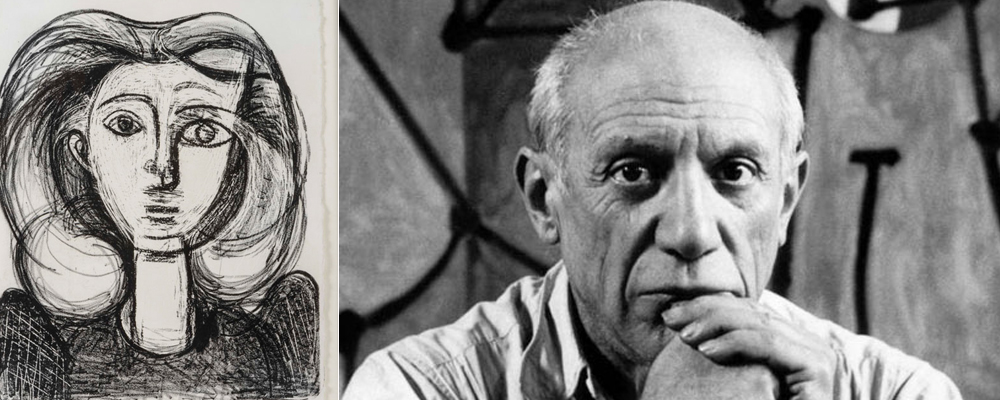‘State of Mind’ Focuses on a Different Side of Picasso
Sandra Miska
The Norton Simon Museum in Pasadena has selected the best of its collection of 700 Picasso prints for an exhibit highlighting the artist’s later works “State of Mind: Picasso Lithographs 1945-1960.” A highlight of the exhibit features the work-in-progress versions of “The Bull,” as series that shows how he first depicted his subject in a simple brush and ink work, then an anatomical diagram, then a few lines that suggest the animal in the same way as did our ancestors, the cave painters of prehistoric times.
The museum notes that lithographs reveal more about the artistic process than oil paintings, which “inevitably covered their tracks, concealing the process of their making under layers of opaque color.” However, “prints – especially lithographs – … record their own development through sequential stages, charting the movement of their maker’s thoughts from state to state.” The works on display show that Picasso, as he did in “The Bull,” would make several prints of the same design, and the trajectory of the work became apparent in the final version.
Saying that Pablo Picasso was a Spanish painter is comparable to saying that God is a deity worshiped by religious people. Nevertheless, here is a brief biography of the man who transformed visual art from representation to abstraction, i.e. three or four lines that “suggest” a bull:
The man in question was born in Spain in 1881, but spent most of his adult life in France. After training under his father, he made his first trip to Paris in 1900. He was first influenced by artists such as Théophile Alexandre Steinlen, Henri de Toulouse-Lautrec and Edvard Munch. He began his unconventional work within his Cubism Period (1909-1912), during which he and contemporaries broke up space and shapes to depict them in a visual style that had never seen before.
His masterpiece, “Guernica,” is a cubist depiction of the bombing of a town during the Spanish Civil War, and is seen as both a vigorous combination of violence and a plea for pacificism.
Picasso later focused on what he called “the movement,” according to the museum, creating an unparalleled oeuvre of assemblages and other works in his later life. “The movement,” he stated, “…when the movement of my thought interests more than the thought itself.” This new interest in “movement” manifested itself in his interest in his printmaking, the focus of “State of Mind.”
“State of Mind: Picasso Lithographs 1945-1960” will be on view at the Norton Simon Museum Oct. 14, 2016 – Feb. 13, 2017.

